Every workplace needs written instructions that employees can follow when working within the organization to create harmony among themselves. Such guidelines are written in the employee handbook, which is a compilation of all established guidelines. Employers can use a template to create the employee handbook and ensure it covers all the key procedures and practices of their organization. The handbook can then be used during onboarding to educate new hires on what is expected of them and the workplace culture.
What is an Employee Handbook?
An employee handbook is a document employers prepare to outline the organizational culture, policies, expectations, and rules for performing day-to-day operations.
It is utilized as a reference tool for each employee and employer to understand their rights and responsibilities in the workplace. It relatively functions as an organization’s “constitution.” With the handbook in place, you can work with your employees in harmony, increasing productivity and reducing conflicts. It also protects you from unwarranted claims or lawsuits that cannot be justified through the handbook.
A comprehensive employee handbook will outline the company mission, vision, values, policies, procedures, code of conduct, and working conditions. It can then be shared with current employees and recruits to ensure they understand how things are done in the organization. The document will then be referenced in different workplace situations to ensure the proper procedures are followed. The handbook is alternatively referred to as a staff manual or employee field guide.
Importance of an Employee Handbook Template
A template is a fillable document created to illustrate and guide you on how to format and structure an employee handbook. It is used as a starting point to speed up the preparation process of the handbook rather than starting from scratch. Additionally, it can be customized to incorporate company-specific policies. Such templates can be downloaded for free online.
A template has sections and subsections for all the key information that is to be included in an employee handbook. You can save time and effort compared to creating the staff manual from scratch. Additionally, using a free template ensures consistency in the presentation of information as the basic outline and format are retained. This way, no important sections, such as legally required policies, are forgotten, and your business or organization remains compliant with employment laws and regulations.
Lastly, the template is written in simple language to make it easy for employees across all levels to understand the handbook. However, avoid using the template verbatim. Always tailor the template according to your preferences.
Types of Employee Handbook Templates
Daycare employee handbook template
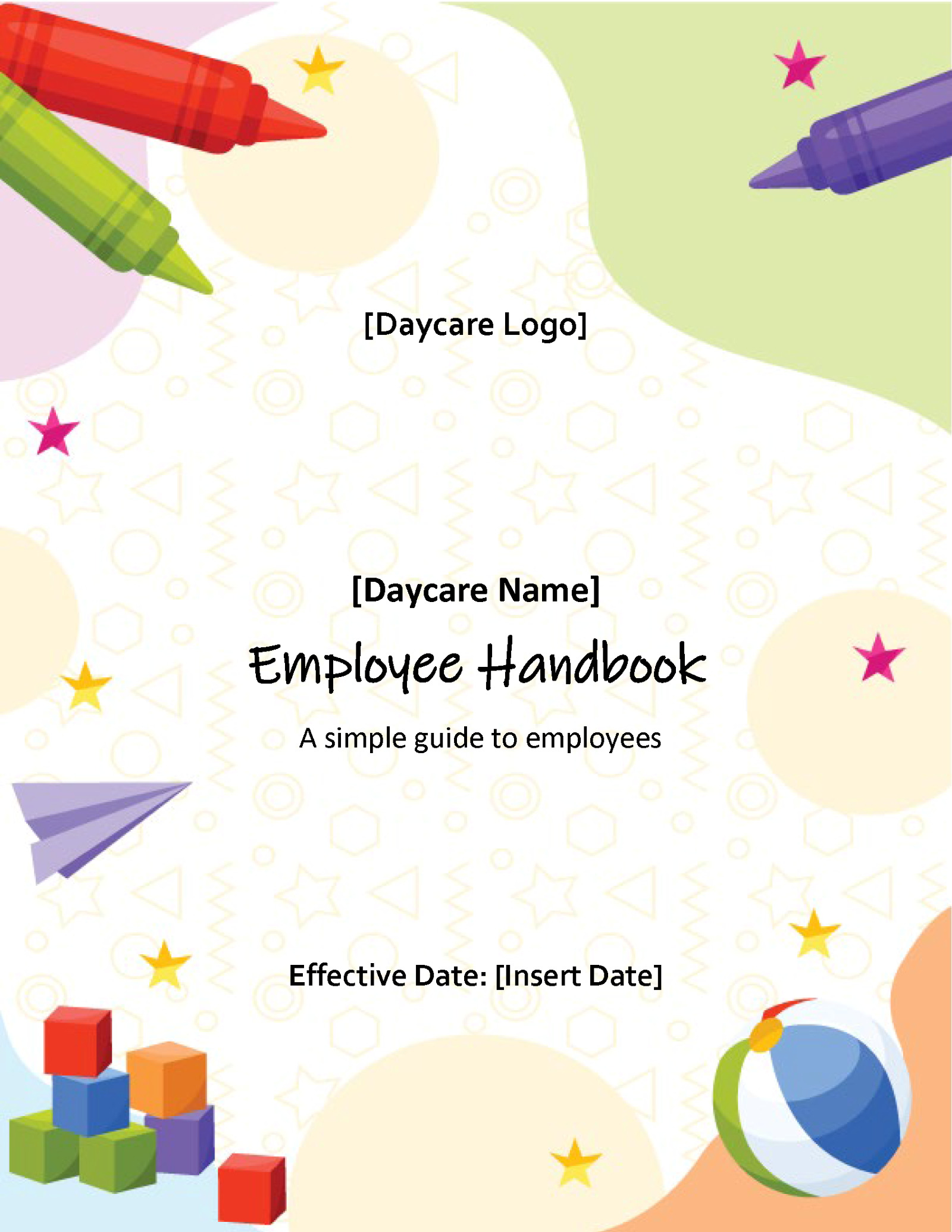
This template is pre-designed to document policies and guidelines adopted in a daycare. As such, it will have sections addressing child safety, staff responsibilities, discipline management, medical and accident emergency procedures, channels for communication with parents, and applicable state and local laws.
Dental office employee handbook template
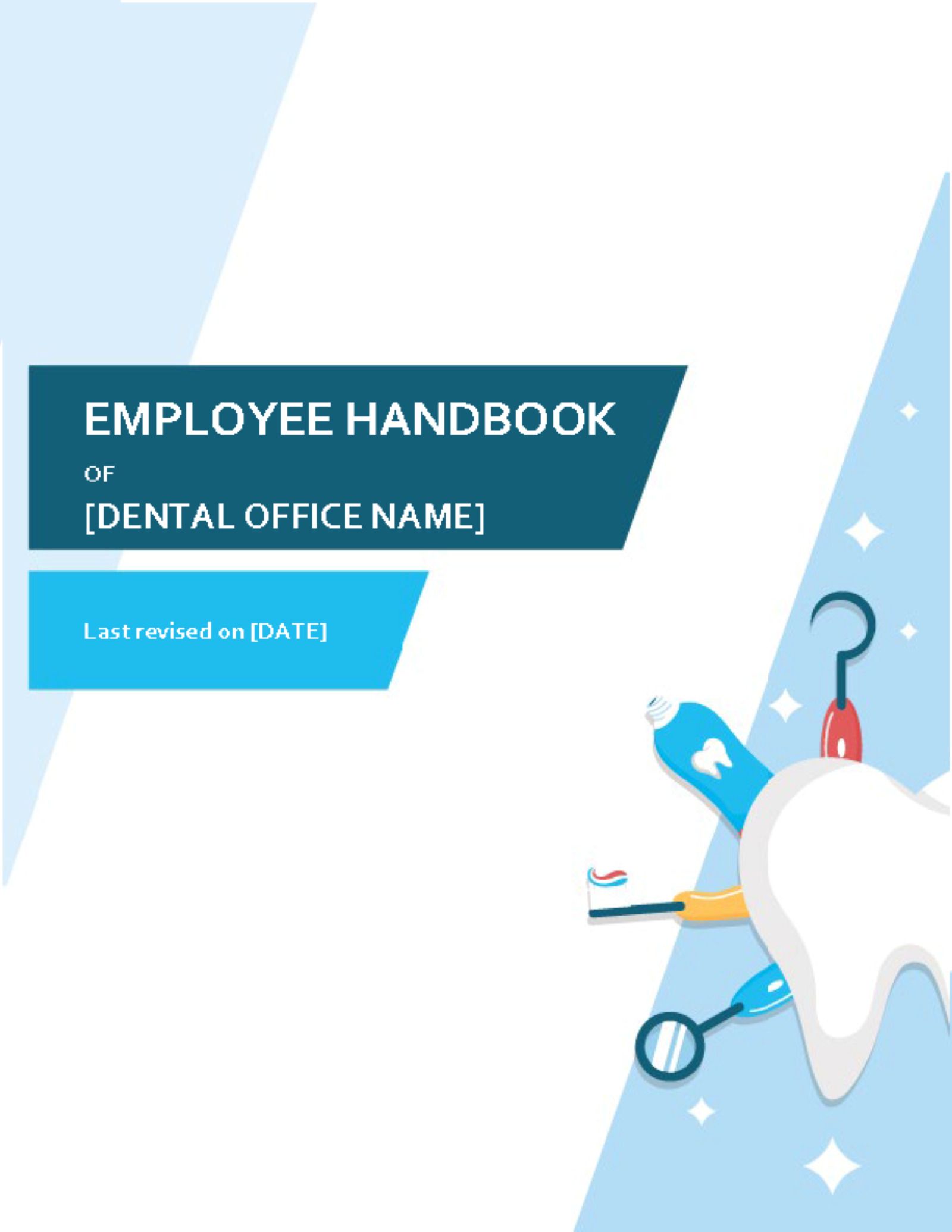
A template for a dental office will have sections on patient privacy, appointment scheduling, professional conduct, standard dental protocols, billing procedure, and applicable dental industry regulations.
Non-profit employee handbook template
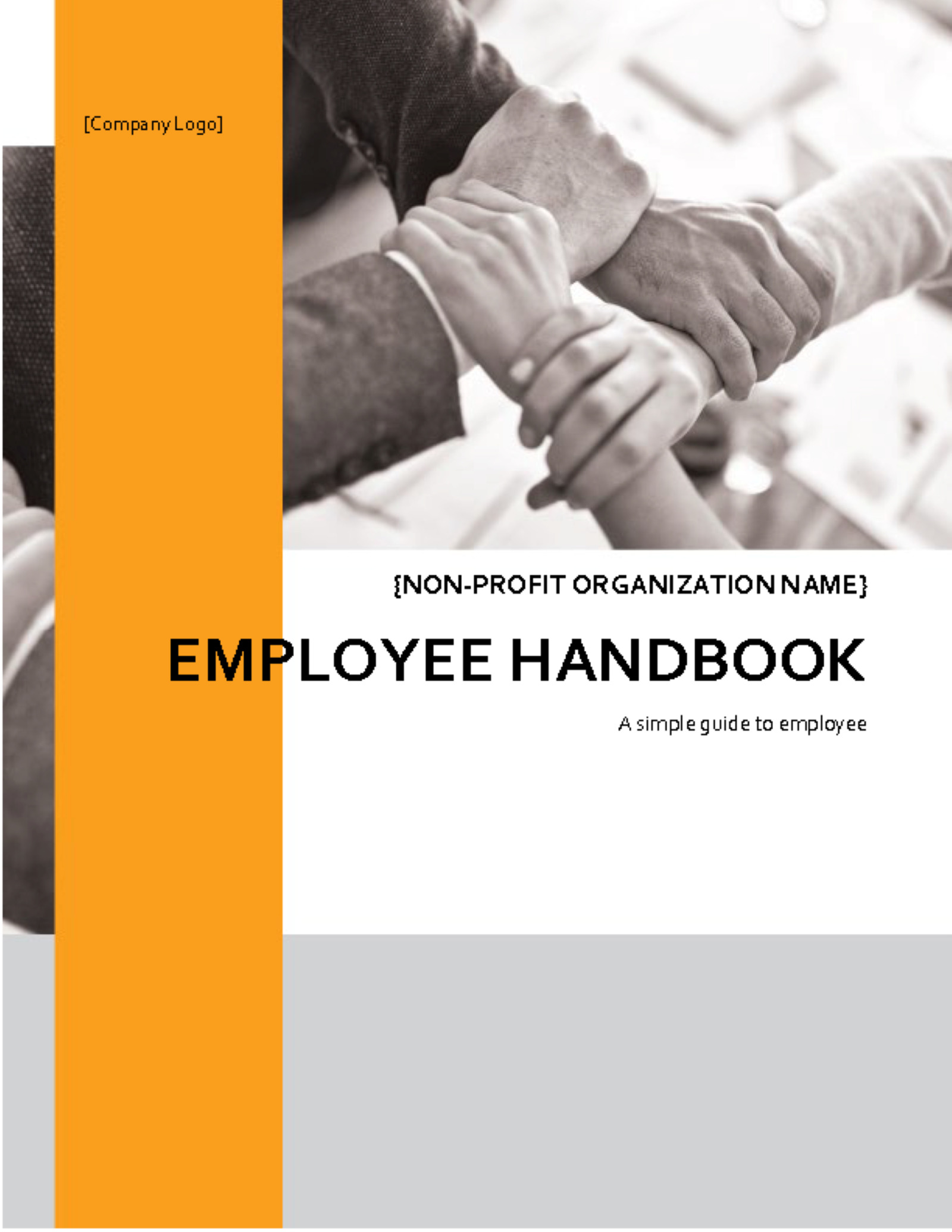
Non-profit organizations can use this template to document policies and guidelines in the employee handbook. It has sections for the organization’s mission, values, code of conduct, volunteer application procedures, employee responsibilities, fundraising procedures, and applicable legal laws and regulations.
Restaurant employee handbook template
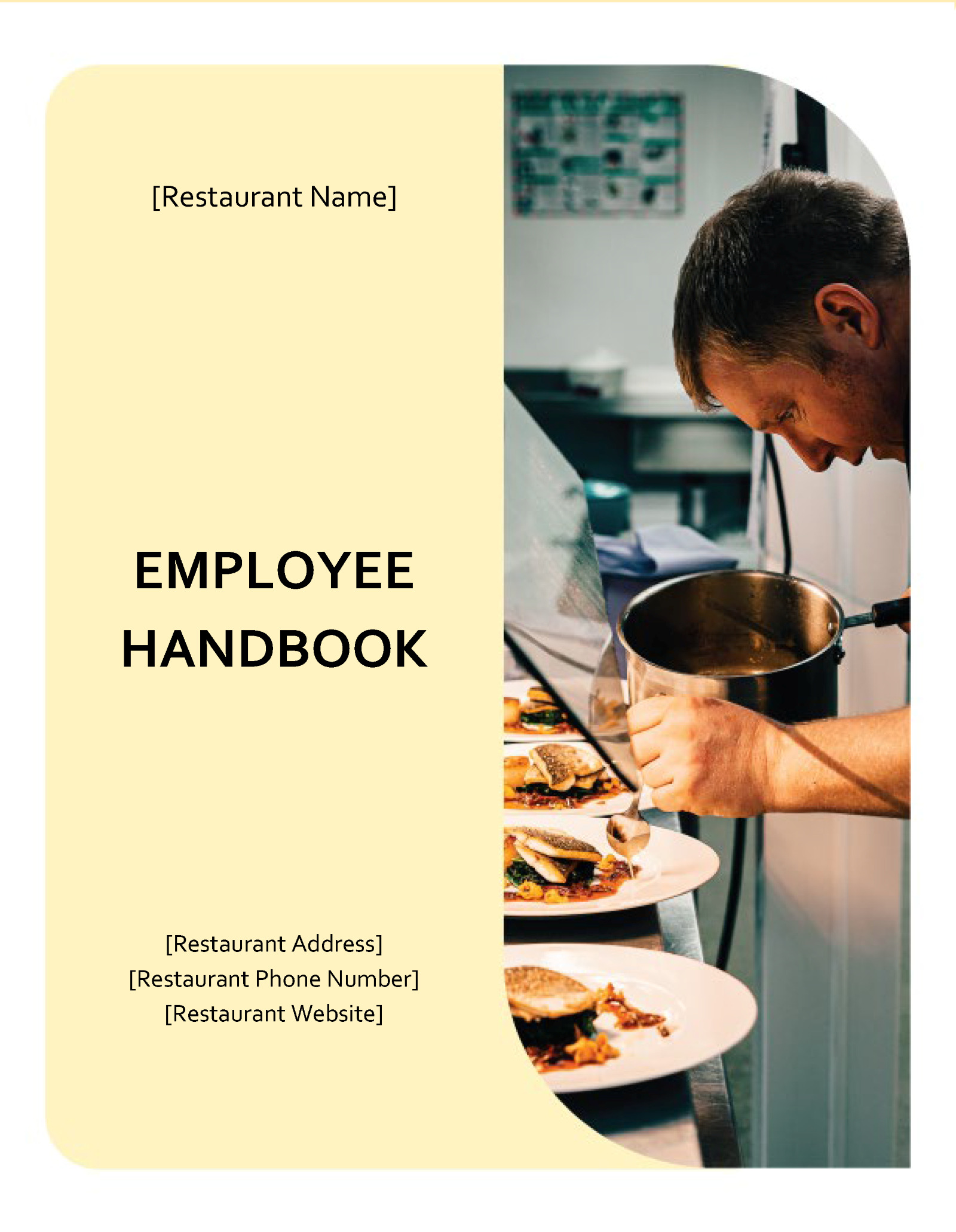
This type of template has sections to record policies and guidelines relevant to any restaurant. Examples of topics addressed by such policies and guidelines include food safety, hygiene, customer service standards, dress code, professional conduct, shift management, and tips management.
Construction company employee handbook template

Such a template will have entries for safety protocols for operating and maintaining equipment, accident reporting procedures, personal protective equipment (PPEs) requirements, work hours and overtime policies, and worksite rules. It will also have a section for industry-specific laws and regulations.
Small business employee handbook template
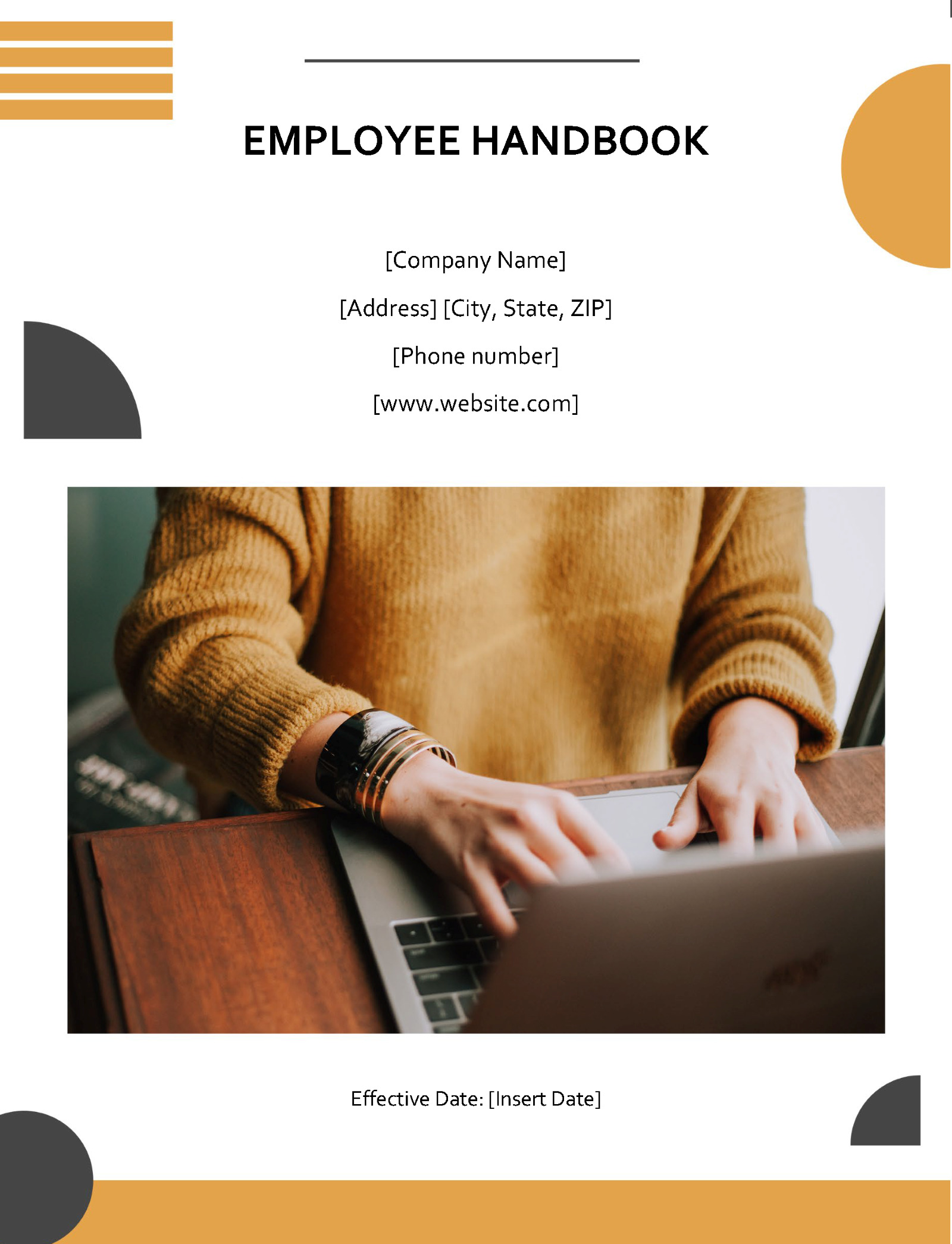
This is a simple template meant to record the key policies and guidelines needed to operate a small business. It will have sections to document guidelines on employee conduct, attendance, roles, and responsibilities, leave policies, compensation and benefits, and performance evaluation processes.
Salon employee handbook template
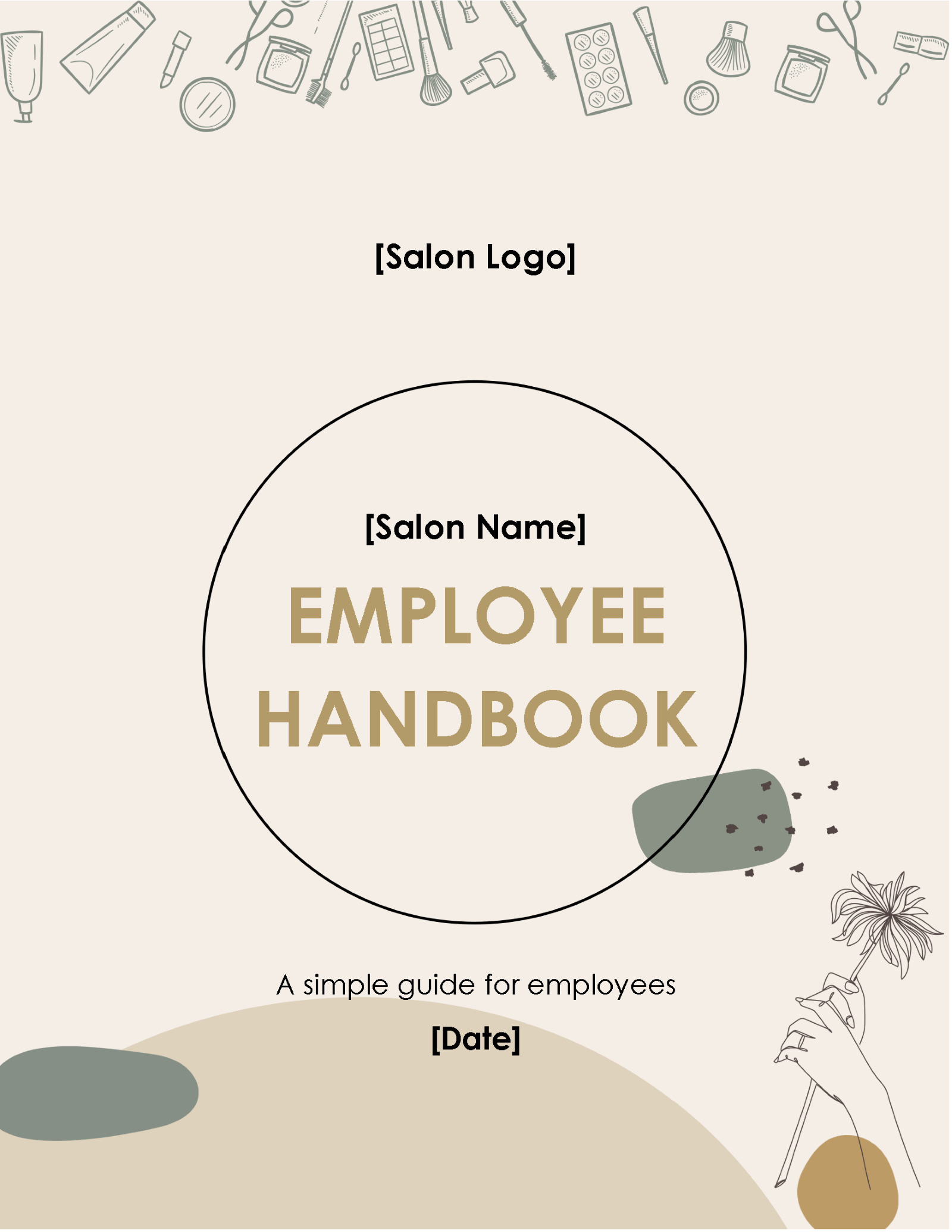
A template for an employee handbook for a salon will have entries for appointment scheduling, professional conduct, customer service, personal appearance standards, compensation, and compliance with applicable licensing and work conditions regulations.
Free Templates
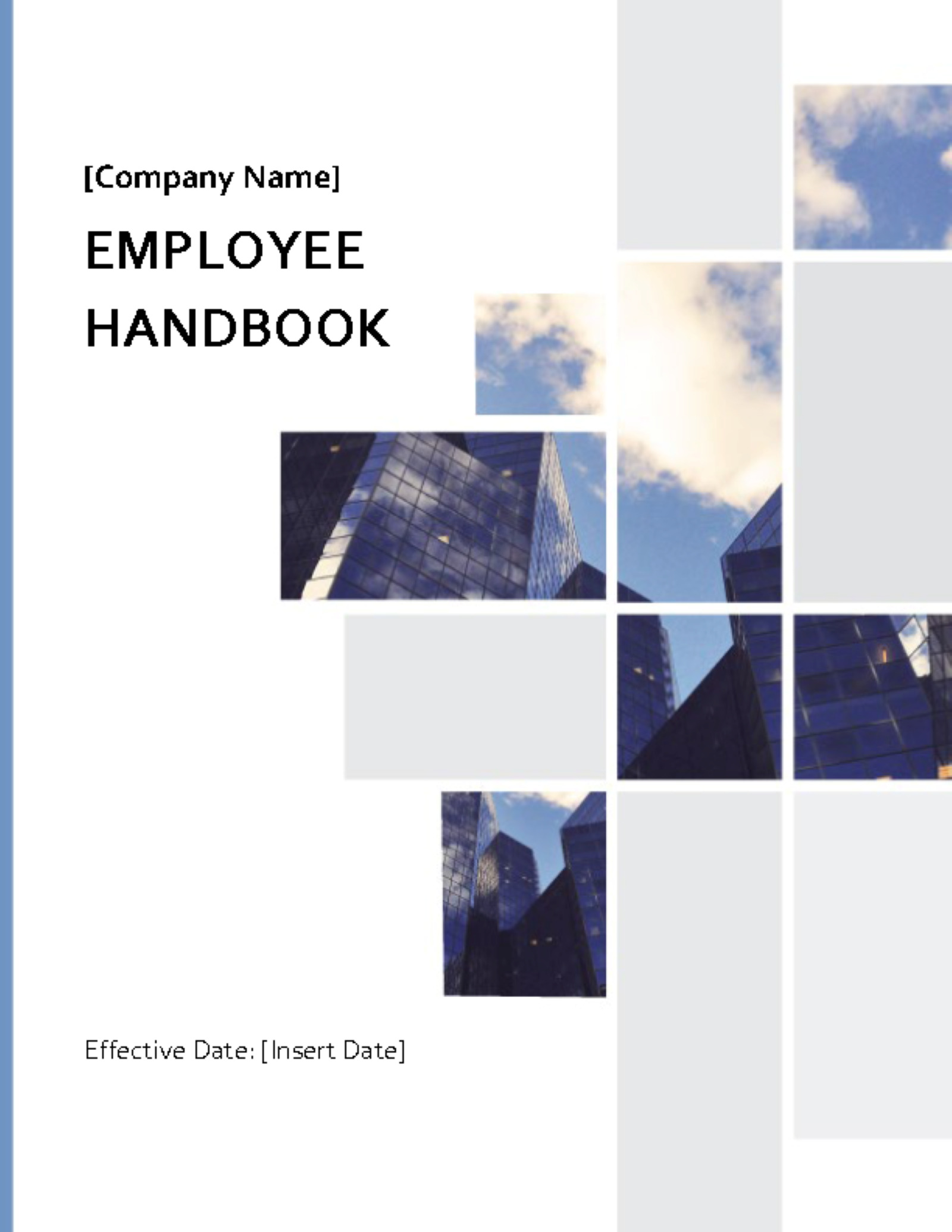
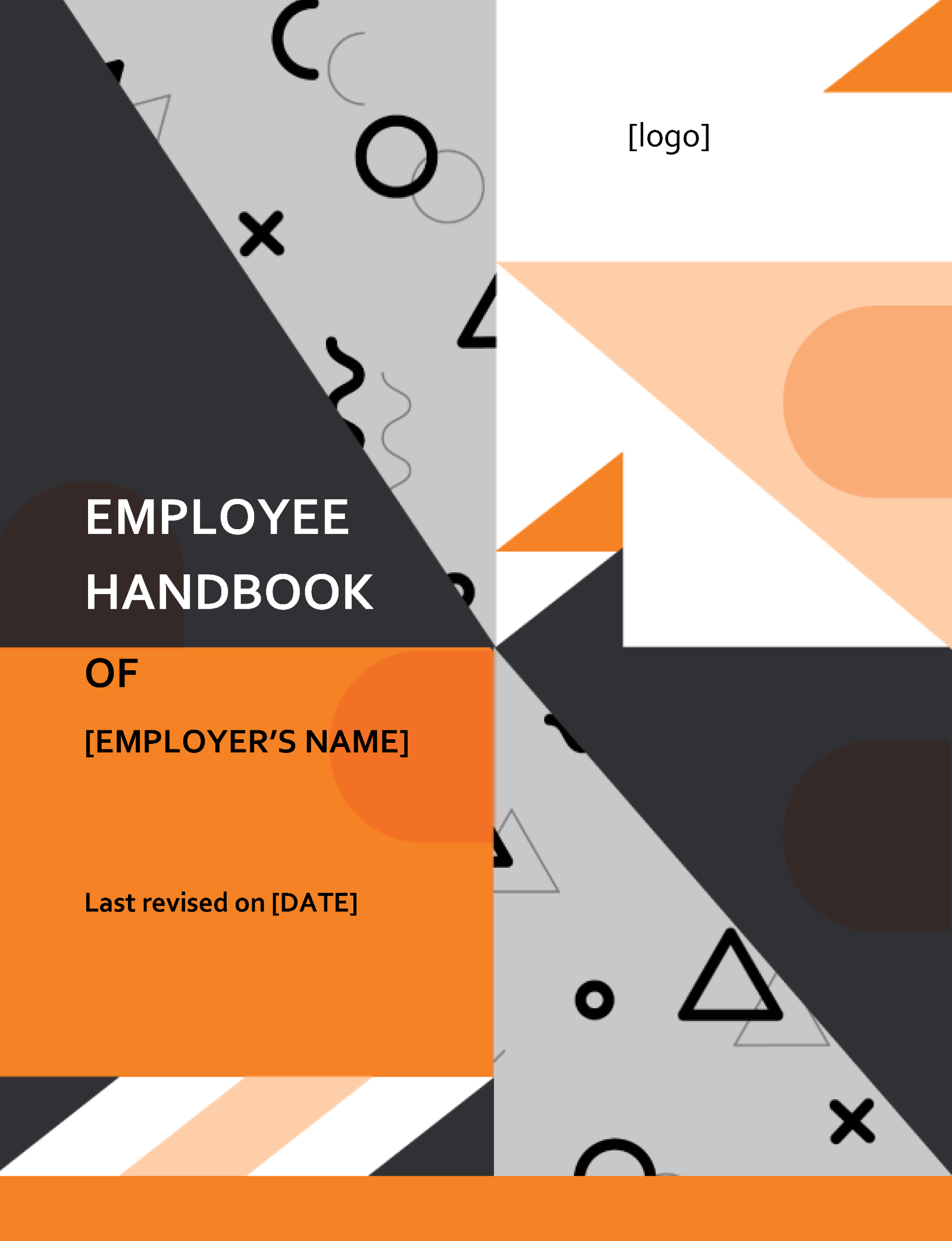
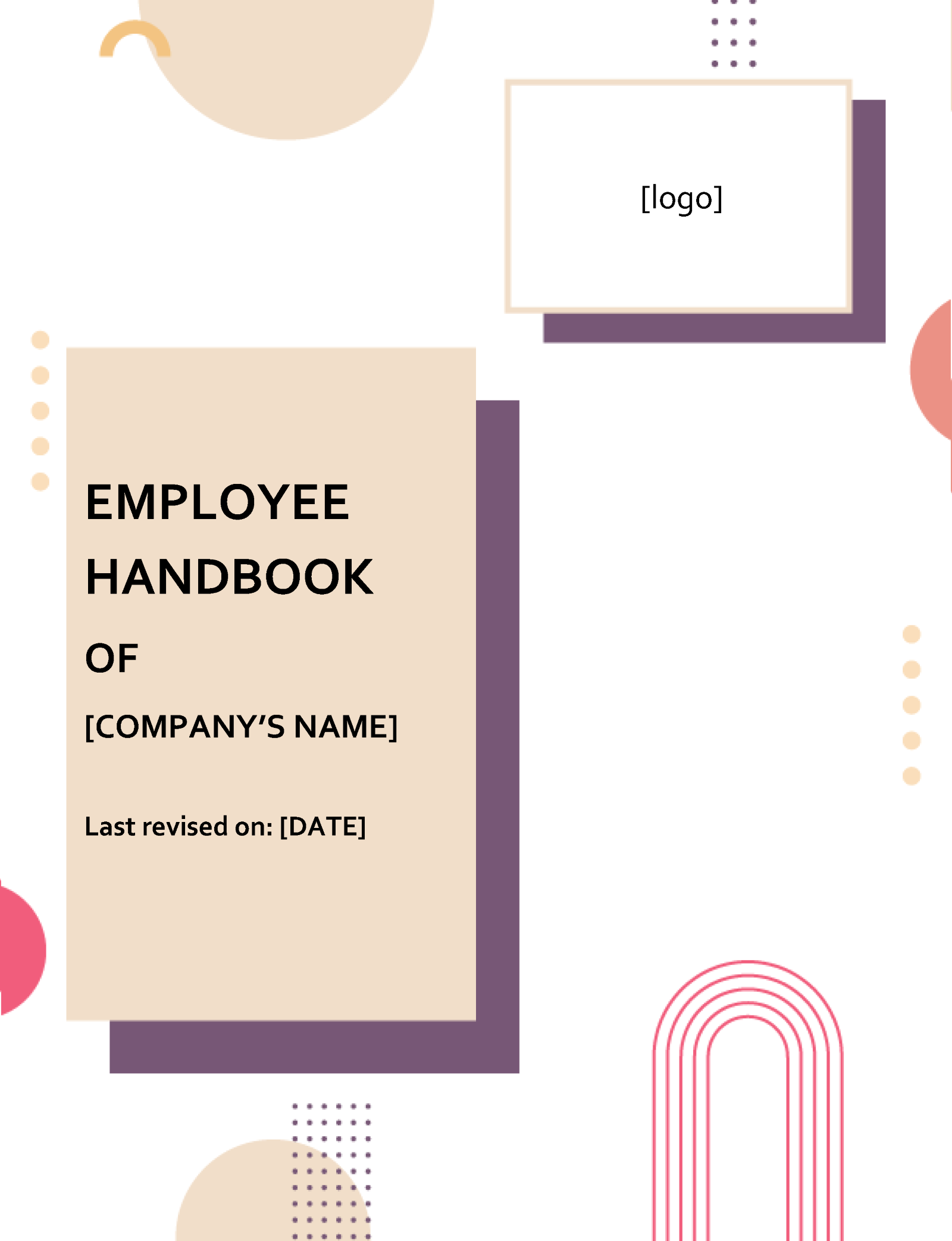
What to Include in an Employee Handbook Template
An employee handbook should outline an organization’s policies, practices, and workplace culture. This information can be categorized into sections that form the basic structure of a template.
Below are the typical components of such a template:
Employment basics
The handbook ought to inform employees of different aspects of employment arrangements they may encounter during their time in the organization.
This section can discuss the following aspects:
- Employment contract types: Employment can be offered under different types of contracts in an organization. It is important to enlist and define each type of employment contract employees will interact with in your organization. This includes full-time, part-time, short and long-term, and independent contracts. For each type, outline the rights and responsibilities, employment status, benefits, and termination procedures. Also, clarify the difference between exempt and non-exempt employees in terms of overtime pay and compliance with the FLSA (Fair Labor Standards Act). Note that the type of contract will often influence your legal and regulatory compliance obligations.
- Equal opportunity employment: This section communicates the organization’s stance and commitment not to hire individuals based on their demographics, such as sex, religion, race, nationality, age, disability, and other discriminatory qualities. It should also clarify that once hired, an employee will not be harassed based on these discriminatory aspects. This section should also outline the procedure for reporting such discriminatory cases and potential consequences to at-fault parties. This information is conveyed as a means to comply with discrimination protection laws such as the ADA (Americans with Disabilities Act).
- Recruitment and selection process: The company’s recruitment process should be communicated in the handbook to ensure everyone understands the utilized procedures. The template must thus have a section to outline the hiring process, which involves screening, interviewing, and selection. This process must promote fairness and unbiased recruitment. Additional information that must be provided in this section includes topics such as job advertising, application methods, background checks needed, drug testing, and reference criteria for selecting new hires. This section can also discuss aspects such as promotions, transfers, and succession procedures. These guidelines promote transparency and consistent fairness during the selection process.
- Attendance: Policies on attendance are important to facilitate optimal operation and employee productivity in the workplace. So, the template must have a section to outline your expectations in terms of punctuality, attendance, and absence recording. These guidelines must also define the process for applying for authorized absence due to factors such as medical concerns, personal emergencies, and applicable leave. The consequences of consistent absenteeism, lateness, and unauthorized absence should also be outlined.
Traditional workplace policies
Some policies have been traditionally implemented in most workplaces due to their significance in maintaining harmony and protecting both employers and employees.
Examples of such guidelines that can be addressed in an employee handbook include the following:
- Confidentiality and data protection: The template ought to have a section to document the policies and procedures for handling data. This is because sensitive data must be protected to prevent breaches and protect the organization from associated data privacy and protection laws. The guidelines should stipulate how data is accessed, stored, encrypted, and discarded. Examples of such data include customer data, employee personal information, trade secrets, etc.
- Harassment and violence: It is important to specify rules regarding harassment, discrimination, and violence in the workplace in order to protect employees from abuse. This section in the template should be used to define what is considered harassment and the proper procedure for reporting such cases. Information on how victims will be supported and the consequences to perpetrators should be outlined. The organization’s stance on such cases and assurance to resolve them promptly and confidentially should be stated. This component is highly important in the handbook as employees want to feel protected.
- Anti-discrimination clauses: The employee handbook must clarify and state how you are committed to making the workplace discrimination free per federal and state laws. This section in the template should allow you to enlist the applicable laws and protected classes. Also, specify areas where such laws shall be enforced, whether during hiring, compensation, benefits, or promotions. This section must include a clause clarifying that all decisions will be based on merit, qualifications, and work-related factors.
- Workplace safety and health: Employee safety and health should be a priority for any employer. So, you should use the employee handbook to communicate your commitment to ensuring workers are protected, and the organization complies with OSHA (Occupational Safety and Health Administration) regulations. Under this template section, you can discuss guidelines on how to handle emergencies, report accidents, hazard communication, and personal protective equipment requirements.
- Immigration policy: You should use the handbook to communicate your organization’s policy on employing foreign nationals and applicable requirements such as Form I-9 and employment verification forms. To this effect, you can guide employees on how to complete Form I-9 and include references. These guidelines should comply with federal laws and regulations. Also, direct readers on how immigration-related inquiries and audits will be handled. It is important to clarify that your organization is committed to employing qualified applicants eligible to work in the US.
- Social media policy: This policy is meant to outline regulations on how employees can use social media in a professional capacity during and after working hours. It should be used to define appropriate use to avoid misunderstandings. This template section should urge employees to protect confidential information, use social media appropriately, avoid conflict of interest, maintain professionalism and protect the company brand online.
- Drug policy: Use this entry to issue instructions and consequences for possessing, using, and distributing illegal drugs or controlled substances within the workplace. This policy should also issue guidelines regarding the misuse of prescription medication at work. Consequences of violating this policy may include termination of employment, disciplinary actions, and mandatory rehabilitation programs. You should also use this section to clarify any drug testing procedures used in the organization.
Code of conduct
The code of conduct is a set of principles, values, and rules dictating acceptable behaviors, best practices, relationships between employees, and decisions at the workplace. Each organization will have a specific and unique code of conduct, which must be clarified in the employee handbook.
Below are the topics discussed under this section of the template:
- Dress code: The dress code defines what is termed as appropriate attire at work or during official engagements such as client meetings and company events. The template ought to have a section to outline this information and elaborate on the specific group to which each guideline will apply. Consider the different roles, work environments, departments, and industry-specific recommendations when formulating these guidelines. You should also clarify what is considered unacceptable attire and the consequences of violating the dress code.
- Cyber security and digital devices: A section to outline procedures to protect digital information and safeguard personal and company-issued devices from cybersecurity breaches must be provided in the template. Any restrictions on using personal devices for work and access to company networks and data should be communicated. Other cyber security concerns you can discuss include backup procedures, acceptable use of technology resources, software usage guidelines, and access authorization requests. You should clarify any consequences of unauthorized access or misuse of technology resources.
- Conflict of interest: Conflict of interest occurs whenever employees engage in activities that disadvantage or serve the same objectives as their employer. So, use the template to define what constitutes a conflict of interest in your line of work. You can include examples of situations where a conflict of interest may occur to provide further clarification. Also, ensure to outline a procedure on how employees can seek approval or guidance in similar situations.
- Employee relationships and fraternization: As an organization or employer, it is your responsibility to regulate relationships within the workplace that may affect employee performance or lead to conflicts. Such relationships include romantic and familial relationships or fraternization. Use the template to communicate restrictions and the proper channels to report violations. These guidelines are essential for maintaining professionalism and preventing conflicts of interest, favoritism, and personal disputes at work.
- Employment of relatives: Nepotism, which is the awarding of jobs to relatives, can often result in favoritism, conflicts, and changes in power dynamics at the workplace. Therefore, it is vital to formulate and communicate guidelines that prevent employees from recruiting their relatives and outline them in the employee handbook. These guidelines emphasize fair treatment at work and merit-based recruitment. It also ensures objectivity is maintained across all parts of the organization.
- Workplace visitors: It is important to limit workplace visitors to maintain order, security, productivity, and professionalism. Use the template to outline guidelines for handling visitors, from registration, access, escort, and confidentiality requirements in the employee handbook. Clarify the categories of visitors these guidelines will be applied to, whether they are clients, vendors, relatives, or other third parties such as students or regulatory authorities.
- Solicitation and distribution: You should outline procedures for soliciting and distributing non-work-related materials between employees, whether for personal or commercial purposes. Examples of such materials include brochures or flyers. These procedures prevent conflicts and increase productivity since requests for non-work-related materials do not distract employees. Also, you should restrict employees from using company materials for personal use or to promote external organizations.
Compensation and development
The employee handbook should discuss matters regarding compensation and workers’ professional and personal development. Therefore, a template should have sections to document the following information regarding employee compensation and development:
- Compensation status and payroll: Compensation includes salary, wages, bonuses, overtime, etc. This section of the template should be used to outline payment intervals, types of deductions such as withholding tax, overtime pay, and payment methods (direct deposit or physical check) adopted by the organization. This section of the employee handbook should observe any applicable wage and hour laws. Also, outline protocols for requesting pay stubs and seeking clarification on compensation-related matters.
- Performance management: You should outline the policy in place to govern performance reviews and decisions based on the results of assessments. In this section of the template, you can state the frequency of assessments, criteria for evaluation, expectations in terms of performance, and evaluation methods. Such policies are meant to ensure performance levels are maintained, goals are achieved, and feedback is given to employees on how to improve their abilities. In this regard, you can educate employees on the importance of feedback, coaching, and development. Lastly, you can state how exceptional performances will be rewarded.
- Employee training and development: Employee training and development are important to reduce turnover. This is because employees can improve their skills, knowledge, and overall performance and thus continue being valuable to the organization. Use this section to outline any available opportunities for employees to learn new skills and grow personally and professionally, as well as the process of applying for these opportunities. Examples of such opportunities include workshops, on-the-job training, mentorship programs, seminars, and sponsorships.
Benefits and perks
Employer benefits are offered in various forms, such as health insurance, pension, paid holidays, and other incentives. They are often a significant consideration by employees during the probation period. So, it is necessary to enlist them in the employee handbook so that every worker can familiarize themselves with the benefits they are eligible for.
Below are common benefits that can be discussed under this section of the template:
- Employee health: Use this template section to inform employees of any available health benefits. This may include health insurance coverage, access to internal medical services, or wellness programs. Specify the types of benefits available, eligibility criteria, enrollment periods, and the claims request processes and premium contributions towards these benefits. Also, indicate the type of specialists and facilities to which employees will be granted access.
- Workers’ compensation: You should outline the company’s policy on work-related injuries and illnesses. Clarify the procedure for reporting, seeking medical attention, and compensation in such cases. However, ensure to communicate your commitment to providing a safe working environment and policies in place to enhance safety.
- Work from home: If some employees can work from home, it is necessary to outline the procedure for requesting this benefit and the associated rules. Specify the eligibility criteria for this privilege, available remote management tools, and expectations in terms of productivity, communication, cyber security, coordination, accountability, etc.
- Employee expenses: It is considered professional conduct to reimburse your employees for work-related expenses such as travel, office supplies purchases, etc. So, use the template to outline the proper procedure for requesting reimbursements. Make sure to specify the required documentation, submission methods, timeline between request and reimbursement, expenses limitations, and approving party.
- Company car: If some employees are issued company vehicles to run company errands, you should use the template to specify the applicable issuance procedure and usage and maintenance instructions. This section should specify the eligibility criteria, define authorized use, and how different usage and maintenance aspects, such as fueling, servicing, insurance coverage, personal use, etc., will be handled. Also, provide a procedure for reporting damages and accidents.
- Parking: Another benefit you should address in the employee handbook is parking allocation and payment, if applicable. Indicate the number of parking slots available, designated parking areas, and application for parking passes to clarify if parking is free or paid for. If parking is allocated to a select few, outline the eligibility criteria and selection process. Also, indicate any applicable rules such as reserved slots, visitor and disability parking slots, and applicable consequences of violating these rules.
- Company-issued equipment: The employee handbook should also communicate any policies regarding how company-issued equipment, such as phones and laptops, should be used and maintained. Therefore, use the template to define appropriate use, software installation and personal use restrictions, and data protection measures. This section should also outline the procedure for reporting lost or stolen equipment, repairs, and returning them, typically after termination of employment. These guidelines must clarify that the employee is responsible for safeguarding such equipment, even if the company may cover repair and maintenance expenses.
Working hours, PTO, and vacation
You should disclose the number of hours employees are expected to work and factors that can influence this duration to employees. This is because employees will always want to identify official hours so that they can plan their days accordingly.
Below are topics discussed in this section of the template:
- Working hours and Paid time off (PTO): Use the employee handbook to communicate official working hours, which should comply with applicable labor laws. State the start time, breaks, and end times. Also, specify the days employees will be entitled to as PTO (paid time-off), the request and approval procedure, notice periods, and consequences of unscheduled or unauthorized time-off.
- Holidays: Employees should be given holiday breaks as an effort for fair treatment and non-discriminatory practice. Therefore, the template should have a section to enlist all the holidays officially recognized by the organization. Then, this section can be used to communicate your stance on paid holidays, guidelines on how holidays occurring during weekends or non-working days will be handled, and how employees working on holidays will be compensated.
- Sick leave: Use this template section to inform readers of the company’s sick leave policy, which should comply with applicable laws such as FMLA (Family Medical Leave Act). Use the policy to guide employees on how to apply for sick leave, eligibility criteria, and documentation requirements. Also, specify any limitations on the use of medical leave for personal matters and how the accrued leave will be managed. Lastly, reassure employees of the company’s commitment to supporting their recovery after medical leave, for example, part-time and work-from-home provisions.
- Vacation and annual leave: You should award your employees time off for rest and personal commitments every year in order to create a life-work balance. Therefore, use this entry on the template to communicate the eligibility criteria, request and approval process, number of days allocated as annual leave, and notice periods. Also, specify any considerations when approving requests, for example, staffing needs and equality. Lastly, use this opportunity to encourage employees to use vacation leave for rejuvenation in order to improve their productivity and boost their morale.
- Bereavement leave: Events such as death cannot be predicted, and thus it is important to formulate guidelines on how to handle such situations. You should state the number of days employees will be awarded to grieve and the appropriate protocol to notify management of such cases. This is an important policy that illustrates your compassion and support to employees during such difficult times.
- Parental leave: Employers must award their employees parental leave whenever they become new parents through childbirth, adoption, or foster care. Therefore, use this section of the template to clarify eligibility criteria, application procedure, legal requirements, and available options for paid and unpaid leave. Specify the number of paid and unpaid days. Also, mention your commitment to supporting employees during this period.
- Jury duty and military leave: Some employees will be summoned for civic duties such as jury duty and military deployment. As the employer, you must include provisions on how to go about such cases in the employee handbook. Use the template to specify the protocols to be followed in terms of the request submission, approval, documentation requirements, length of such leave, associated pay, and benefits. Also, state the organization’s policy on job protection under such circumstances.
Ending employment
It is important to communicate how the employer-employee relationship can be terminated through resignation or firing. Below are sections of a template that can guide employees on how employment can be terminated:
- Disciplinary action and performance improvement plans (PIPs): PIPs are a human resource management tool aimed at improving employee performance. A disciplinary action is an approach towards correcting wrongdoings or violations to ensure staff members succeed. So, outline how performance issues will be managed, the types of methods utilized, and support provided to ensure employees achieve set goals and meet expectations. Then, clarify the organization’s progressive disciplinary process, how warnings will be issued, including verbal and written warnings, and the potential consequences of consistent indiscipline.
- Resignation: Use the template to outline the proper steps employees should take when resigning from their positions in the employee handbook. Ensure to specify the associated notice periods, documentation requirements, return of company property procedures, transition expectations, and any benefits foregone.
- Termination: Use this section of the template to document the termination process and ensure to specify reasons that can result in termination, notice, and termination meeting requirements and associated severance pay. Examples of reasons that justify legal termination of employment include misconduct, performance issues, contract violations, etc. Also, use this section to highlight the organization’s commitment to fair treatment, respect, dignity, and confidentiality during the termination process.
- References: References are invaluable tools for employees when applying for jobs. As they serve as official recommendations of the job applicant for the specific role, they greatly influence the credibility and reputation of the referee. So, it is important to clarify who is authorized to write references on behalf of the organization and the proper process for requesting such references. This section can also clarify the format and content of the references as well as restrictions on what information can be included. Lastly, inform the readers of the organization’s commitment to providing fair and accurate references.
Employee communications
A successful and functional organization should have proper and efficient communication between employees and management. So, a template for creating an employee handbook should have sections to outline guidelines associated with communication protocols within the organization.
- Procedure for handling complaints: This section should outline the proper protocol for reporting employee complaints, available communication channels, the department or role assigned to handle such cases, and the timeline for reporting and resolving complaints. Also, state any external agencies or additional resources employees can use to appeal unsatisfactory resolutions. Lastly, use this section to emphasize the company’s commitment to impartiality and confidentiality when addressing complaints.
- Bulletin boards: You should use the employee handbook to communicate guidelines on using bulletin boards to convey information. Clarify the type of information that can be shared through bulletin boards, access procedure, the approval process for postings, restrictions on content, and designated areas for the postings.
- Suggestion box: A suggestion box is an important tool for collecting feedback and employee suggestions on matters affecting them. So, ensure to clarify the process of submitting suggestions, how the employees can access the suggestion boxes, associated confidentiality and anonymity measures, and how such submissions are reviewed. Use this section to encourage employees to share their ideas and convey their opinions in the suggestion boxes.
- Staff meetings: Staff meetings are necessary to ensure employees are up-to-date with issues within the organization. However, they must be held in an organized manner. So, use the template to outline aspects such as frequency, duration, purpose, and attendance expectations regarding staff meetings. Also, use this section to encourage active participation and appreciation for diverse opinions and ideas and the importance of staff meetings to solve problems and foster teamwork and collaboration.
Frequently Asked Questions
It depends on the applicable jurisdiction laws and regulations. So, the employee handbook may be required in some states and not mandatory in others. Also, some policies that are typically included in the handbook may be required in some states, thus necessitating the creation of the document.
The handbook is not a legally binding document. However, its content (policies and guidelines) may have legal implications, and the handbook can be taken as evidence in court. Also, consistent enforcement of the handbook may sometimes be taken to have legal implications, but this varies per jurisdiction.
The handbook template can be reviewed and updated annually. However, it can be reviewed regularly per changes in regulations and the organization’s policies and events. According to an XpertHR survey, 40% of organizations report updating their employee handbooks annually, and 31% per any policy changes and modifications of applicable laws and regulations.




